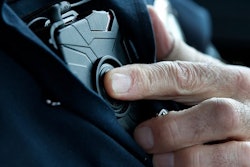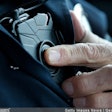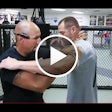Last week an officer with the Columbus (OH) Police Department shot and killed a knife-wielding teenage girl who was lunging at a young woman who was pinned against a parked car.
The officer had responded to a 911 call that went thusly:
Caller: We got these girls over here trying to fight us! Trying to stab us! Trying to put their hands on our grandma. Get here now!
911 Operator: Have you seen any weapons?
Caller: [Inaudible]
911 Operator: Ma'am, do you see any weapons?
Caller: We need a—we need a police officer here now!
911 Operator: Do you see any weapons?
Caller: [Screaming and in obvious distress] No!!!
Then there's a thump sound, and the call goes to dial tone.
From the time the officer exited his vehicle to the time he fired four shots at the assailant—identified as 16-year-old Ma'Khia Bryant—was nine seconds. The scene was total mayhem. As Bryant raised the edged weapon in her hand the officer fired four shots—two sets of two—and the threat was ended.
Officers at the scene immediately attempted life-saving medical care and summoned EMTs to the scene, but Bryant was pronounced dead at a local hospital.
In the immediate aftermath of the incident, pundits in the mainstream national media—as well as critics of police across social media—began floating two absolutely absurd ideas:
1. That the officer shot and killed a teenage black girl—ignoring completely the fact that in so doing he potentially saved the life of a young black woman.
2. That the officer should have fired a "warning shot" to distract the attacker and give himself time to close the distance, disarm the girl, and safely take her into custody.
These are the same people who over the years have brought you such gems as, "Why didn't the officer just shoot the bad guy in the leg?" and "Why didn't the officer shoot the gun out of the bad guy's hand?"
"The View" co-host Joy Behar—a well-known expert in police policies and practices (I speak fluent sarcasm)—said that the officer should have fired his gun "in the air as a warning" to stop the rampage.
"The Five" co-host Juan Williams said, "I guess I would shoot the gun—not necessarily at somebody but maybe shoot the gun—and maybe, you know, run at the person and try to disarm them. I don't know."
The only time that warning shots make any sense at all is when Yosemite Sam of Looney Toons fame tipped back his ten-gallon hat and said, "I'm the meanest, roughest, toughest hombre that's ever crossed the Rio Grande and I ain't no namby-bamby!" before firing his revolvers in the air.
In every other case, warning shots are a terrible idea. They're illegal and irresponsible.
Deja Vu (All Over Again)
Around five years ago, the International Association of Chiefs of Police—and roughly a dozen other police organizations—released their "National Consensus Policy On Use Of Force" with a number of recommendations for police leaders to consider.
Qualified professional police trainers were shocked at the recommendation that officers be allowed the ability to "discharge a firearm for the purpose of compelling compliance from an individual, but not intended to cause physical injury."
Go back and read that again—I'll wait right here.
Issuing such a recommendation leads us to the obvious question: "If I'm not going to shoot the assailant who poses a threat of death or great bodily harm, where am I going to shoot that could be considered a 'safe direction?'"
Short answer: Nowhere is safe. Officers only shoot at threats that are obviously unsafe to themselves or innocents around them. Full stop.
Shoot in the air? Newsflash Ms. Behar and Mr. Williams: Gravity works. What goes up will come down, potentially with dire consequences.
Shoot at the ground? Newsflash Ms. Behar and Mr. Williams: Bullets fragment—a round travelling the 32 inches from the belt to the sidewalk will end up in dozens of frags travelling at high speed in all directions.
Shoot a "whizzie" just past the attacker's ear? Newsflash Ms. Behar and Mr. Williams: officers are trained from the first day of the academy that they are responsible for every single round that leaves the barrel of their sidearm. If a bullet gets lodged in the brick wall of the corner market 100 yards downrange, that officer "has some 'splainin' to do."
Warning shots are an abysmally terrible idea. Prove me wrong.
Final Shots
When this idea was floated at the IACP Annual Meeting—I think we were in Orlando that year, but I never get to see the light of day at such conferences so we could have been just about anywhere—I remember having hallway conversations with a wide array of police leaders.
My standard line to end my participation in these discussions and make my way to the next session—usually about 150 nautical miles away on the other side of the convention center—I'd simply say, "Okay, consider this scenario. Your officer uncorks a round at a fleeing felon, but misses and the subject escapes into the night. During questioning after the incident, the officer says to IA personnel, 'I didn't miss him. Those were warning shots.'"

















